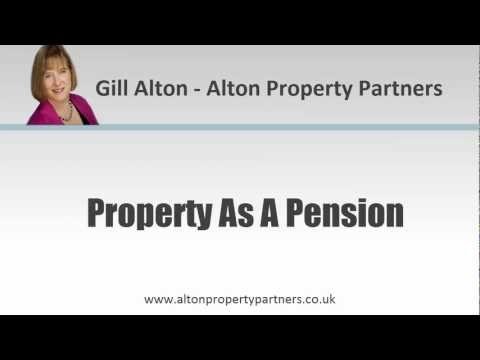Pension or property – what s the best plan for retirement
Post on: 12 Июнь, 2015 No Comment

Should you rely on bricks and mortar for your retirement? Growth in house prices and lucrative buy-to-let yields are making this an appealing option for many, particularly as paltry annuity rates and excessive charges continue to undermine the chances of getting a decent income from pensions.
An exclusive poll of 1,500 people by market research company Consumer Intelligence for The Observer found that one in three is relying on property to help provide an income in retirement. A third said they plan to receive retirement income from one or more buy-to-let properties, while more than half, 55%, said they would sell their own home and use the money to pay for retirement.
It is hardly surprising that growing numbers of people are shunning pensions in favour of property. Returns from company and private pension schemes are uncertain as they depend on how investments perform, and your money is locked away until you reach age 55 at the earliest. On retirement, most people then have to use their pension savings to buy an annuity to provide an income for life but, because of increasing longevity and low yields on gilts, these are often poor value.
And their value has been steadily declining: in October 2003 a man aged 65 with a pension fund of 50,000 could have bought an annuity with a five-year guarantee of around 3,575 a year, according to The Annuity Bureau. A decade later, the same fund would buy an income 14.7% lower, at 3,050 a year. Meanwhile, despite the introduction of the government’s scheme to enrol people into workplace pensions automatically, experts say minimum contribution levels won’t provide for a comfortable retirement .
The appeal of property
The picture for property appears brighter. Property data company IPD says that over the decade to the end of 2012, property has provided an annualised return of 11.2%, compared to 5.1% from equities and 7.6% from bonds.
However, this rise in house prices has been greatly influenced by the London market. According to property website Rightmove, national average asking prices rose by 2.8% in October, although house prices in many regions remain depressed with Wales, the north, the north-west and the West Midlands recording year-on-year falls.
Yet many buy-to-let investors are raking in profits. LSL’s latest BTL Index reveals that monthly rents in England and Wales reached an all-time high of 757 in September. Meanwhile, the number of new tenancies across England and Wales in September increased by 9.2% compared to the same time last year.
Research from buy-to-let lender Paragon found the average rental yield for buy-to-let landlords from June to September this year was 6.4%.
Phil Tily, executive director and head of UK and Ireland, IPD, says: The residential investment sector is one of the few areas of the market where both rents and capital values now exceed their boom time 2007 peaks. Our numbers show that values are now, in fact, 11% higher than during the last market peak.
One advantage of property investing is that you can buy an asset worth 150,000 with a 25% deposit and borrow the rest. If the value increases by 3% a year, your gains effectively quadruple. Bear in mind, however, that if property prices fall, the losses can be catastrophic.
The perils of ignoring pensions
There are pitfalls to relying on returns from property. Danny Cox, from independent financial adviser Hargreaves Lansdown, says: Prices aren’t rising everywhere and transaction costs to buy are very high, including stamp duty, legal fees and estate agents’ fees. Vacancy rates can eat away at returns and some tenants can be a headache.

Owning a second or third property is also not tax efficient. You have to pay capital gains tax on any increase in value when you sell, and income tax on the rental income, although some of these expenses can be offset.
The big advantages of a pension are employer contributions and tax relief. You get initial tax relief, so your investment is given an immediate boost. This is particularly valuable for higher rate or additional rate taxpayers, who will benefit from 40% or 45% initial tax relief – especially if they might be basic rate or even non taxpayers in retirement.
David Smith, wealth management director at Bestinvest says: Someone earning more than circa 44,000 a year could secure 40% income tax relief on pension contributions. Such a significant ‘immediate win’ is only available via a pension contribution; furthermore, investment growth is available from day one.
He suggests doing the sums. How long would you need to keep a property just to equal the immediate tax win you would get from a pension? Furthermore, if you are a higher rate taxpayer, you are going to pay income tax at your highest rate on any rental income and capital gains tax on disposal. Contrast this to a pension where all growth, and most income, accumulates tax free. Also, bear in mind that when you draw a pension you can take 25% of the fund as a tax-free lump sum. If you sell a buy-to-let property to release equity, the proceeds will likely be subject to capital gains tax.
It is also difficult to get any real diversification from relying solely on property.
Patrick Connolly, from IFA AWD Chase de Vere, says: You might not be able to sell property at a time and price that you want. Most pension policies, however, provide a wide range of investment options so it is easy to diversify your holdings and so reduce risk. Also, pension payments can help higher rate taxpayers protect their entitlement to child benefit.
He believes that for most people the best long-term approach is a combination of pensions and Isas. Pensions provide initial tax relief which give your savings an immediate uplift but they are inflexible, whereas Isas can still be tax efficient and you are able to access your money, he says.














